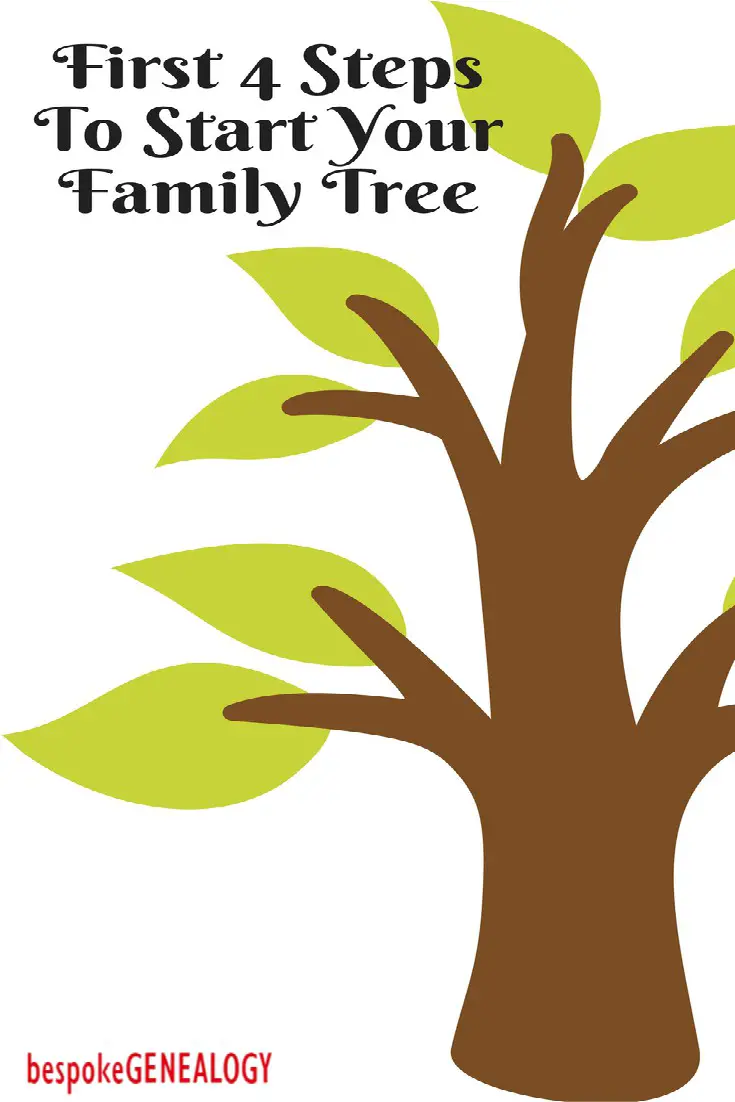
If you are new to family history and you’re not sure where to begin, then here are the first 4 steps to start your family tree. This post should point you in the right direction!
Step 1; Write down what you know
Write down everything you know about your family. I recommend also drawing a simple family tree; include birth, marriage, death dates and maiden names if known.
Step 2; Talk to relatives
If your parents, grandparents or aunts and uncles are still alive, talk to them find out what they know. For every new name that you can add to your tree, get as much information as you can from your relative. If possible, you need to try and find out:
- Full names
- Where deaths occurred, dates and places of burial
- Marriage dates and places
- Names of spouses including maiden names if applicable.
- Children’s names and places of birth
- Occupations and places of work
- Military service; which service, regiment, ship or squadron
- Schools and colleges attended
- If there are any newspaper clippings or photographs.
- If any family member has already done any family research.
- If they have any relevant documents that you can copy (even if it’s just with your phone)
If you know of any cousins or other relatives that you can contact, you should go through the same process with them.
Step 3; Start your tree
Once you’ve started to accumulate information, you’ll want to organize it all. The best way is to start a digital family tree. You have a few options here; you can start a free online tree with Family Search or one of the subscription sites like Find My Past or Ancestry However, I recommend getting a family tree software package and keeping it on your computer or tablet. Family tree software usually is much more flexible than online trees and has more options. There are also privacy issues with the online trees. You can always upload your tree later to a website later if that’s what you want to do.
There are several software packages available; two of the most popular are Family Tree Maker and Roots Magic Both these packages can be synced with Ancestry online trees. If you don’t want to pay for software initially Gramps is a good free open source package. I used Gramps initially and it was perfectly adequate to begin with.
Step 4; Start looking for information online
Start looking for information online. To begin with, you should start with vital records (birth, marriage and death records) and census returns. There is a lot of free information available and I would start with Family Search Then have a look at Cyndi’s List This is an amazing database of links to genealogical resources, both free and paid for.
However, you will probably need to sign up with one of the subscription sites to get the most information. The 4 main ones are:
All the sites have the basics, vital records and census records, but you should check to see what other records each of them hold to see which is more relevant to your own family history. Findmypast and The Genealogist are the best sites if you have British or Irish ancestry. Findmypast has the largest collection of Irish records on the web.
For more steps see: 10 Steps for Starting Your Family Tree
If you have Irish roots, see: 10 Steps to Starting your Irish Family Tree
And for more genealogy advice, please also see
Good luck with your research!
Please pin a pin to Pinterest:











Leave A Comment